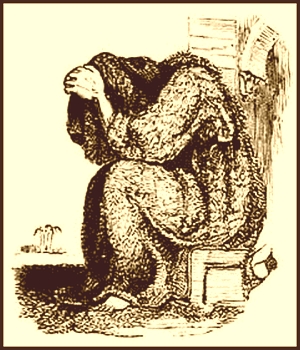How to Explain Your Ashes: 3 Methods
Feb 26, 2017 by Laura Jean Rabiipour
Have you ever been asked about your Ash Wednesday ashes? During the Ash Wednesday service our foreheads are adorned with ashes followed by the words:
"For you are dust, And to dust you shall return." (Gen. 3:19)
This physical sign commemorates the beginning of our Lenten season of sacrifice and spiritual growth. If you are like me, it is not uncommon for your Ash Wednesday cross to turn into a smudge. When going out in public, you may receive a question or comment about your forehead being "dirty". It's easy to be vague and shy away from giving an answer about the meaning of this mark of sacrifice. But this year challenge yourself to be prepared to fully answer their questions. Here are three ways to respond to remarks about the smudge on your forehead:
A BIBLICAL METHOD
The use of ashes originates in the Old Testament times. The Catholic Bible references the use of ashes during times of mourning and repentance. Today we place a cross of ashes on our head. However, when the practice of ashes began it was common to wear sackcloth (a garment made of uncomfortable rough fabric) while sitting and rolling around in ashes (see Job 42: 6, Job 16: 15, Daniel 9: 3-6).
Sample Response: In the Bible, it was common for individuals to place ashes on their body during a time of repentance. Today marks the beginning of Lent, which is the time we contemplate our relationship with God and identify the areas in our spiritual life that need work. The ashes are a physical reminder of our Lenten journey.
 ___________________________________________________________________________________________
___________________________________________________________________________________________
A HISTORICAL METHOD
For thousands of years the faithful who are sorrowful for their sins have been receiving ashes on their foreheads on Ash Wednesday, also referred to as "dies cinerum" (Day of Ashes). The ashes come from the burnt palms from Palm Sunday. They are fragranced with incense, sprinkled with holy water, and are blessed with four ancient prayers. Unlike the laity, clerics historically receive the ashes on the top of their heads because that is where they first received their clerical tonsure. This is why you might see our Holy Father Pope Francis with ashes on his head rather than his forehead.
Sample Response: The distribution of ashes comes from an ancient Christian ceremony. Those who committed grave faults performed public penance and were sprinkled with ashes on Ash Wednesday. For 40 days, they would do penance to be forgiven for their wrongdoings. Today, all Christians, whether public or secret penitents, come to receive ashes on this day.
_________________________________________________________________________________________
A SYMBOLIC METHOD
"Then the Lord God formed man out of the dust of the ground and breathed into his nostrils the breath of life, and man became a living being" (Gen 2:7). Our bodies were made from nothing, and will return to nothing when we die. The ashes are a symbol of this passing world and a reminder of our eventual death (See also John 9:6). However, we have Easter to look forward to. Through Christ's death and resurrection we can receive everlasting life.
Sample Response: By receiving the ashes and keeping them on through the day, we are recognizing that life passes away on earth. We strive during Lent to refocus our lives on God and look toward his Kingdom in Heaven rather than the kingdom on earth.
For Catholic devotional items that will help you through your Lent and Easter journey, go here.
Read next Lenten Season 101: A Guide for Everything You Need to Know

This article was originally published in March 2014. © The Catholic Company. All rights reserved.




